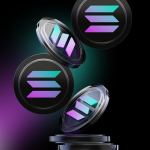With fresh minds, emerging technologies and a post-Covid-19 mentality, these incumbents or start-ups are creating new wealth and making their ideas and propositions manifest quickly and sustainably in a reshaped and accelerating world.
In short, they are making and taking the new markets.
Our study of over 100 cases in our new book Distinguishers – Winning Customers at Speed, Scale and Lower Costs reveals how they do it. There is a recipe.
They have a deep understanding of new movements and values, which shape their propositions
Distinguishers are obsessed with getting people to do different things, not just use the technology to do what’s always been done digitally. They change customer behaviour at scale and deliver new and better outcomes for people, places, and the planet. SodaStream reduced the 150 billion plastic bottles and cans not recycled a year because it got people to become home sparkling water makers. Now it makes more carbonated water than any other brand in the world. Discovery Insure changed driver behaviour to decrease the unusually high number of road accidents in South Africa.
In the process of changing behaviour, distinguishers radically alter the market displacing old and stale brands and industries (who we call extinguishers.) Uber has forever changed the way people get around in places and the entire transport industry. Shopify made Software as a Service (Saas) the new normal, so large investments in infrastructure are no longer a barrier for small businesses to go ecommerce.
They change customer behaviour
Distinguishers make an educated hypothesis based on an intuitive sense of what markets want, though markets may not know it or ask for it. Who asked for an Uber? Or a Zoom or a Netflix? Yet today we all use them.
They either convert their existing customer’s behaviour at low cost quickly, which Capitec did when it teamed up with Easy Equities, to allow the masses excluded from the stock market to buy part shares. Or they start from scratch which Shopify did with its B2B ecommerce platform (800,000 merchants now use them), so that small businesses could be as competitive as larger firms.
Distinguishers often switch what was previously idle, ignored or invisible into assets that customers can buy – or – from which they can earn income. That people would rent out spare space in their home to a stranger, and that these strangers then would become friends and part of a community, is just astounding. That Livestock Wealth would turn ‘the 100 million cow potential in Africa’ into an asset, which small farms can leverage and global consumers invest in (instead of shares), is equally awesome.
As they grow, distinguishers open up space for shared wealth by attracting opportunities for new players to join their ever-widening ecosystem. Flexi Club, a South African startup (also in Mexico), enables people to invest in driver vehicles. Through its app, BBVA, the Spanish digital bank, allows Uber drivers to be paid immediately, and they scale swiftly by getting more spend per driver offering them and their families loans etc.
They have a scaling playbook
No distinguisher scales a bad product. They get it right, acknowledging that overdoing it isn’t the answer either (because it will slow things down), but a “minimum loveable product” is. No brand had actually got the product right, so there was no real market take-up until Zoom got it to work. Uber moved with astonishing speed but it was carefully crafted, making sure the experience was superb so that it would be talked about and people would say, ‘It works, it’s easy, try it’.
They drive demand using customers to bring in other customers. Instead of extinguisher mass production and marketing shout, distinguishers scale using customers as their “scalesforce”. Word of mouth was a slow burner. Now the internet makes it a viral phenomenon with high velocity and reach, with customers the new channel to market, irrespective of whether the offering is digital or physical.
It’s no longer what brands and enterprises say about themselves that matters. It’s what customers say about them. Which means every customer experience counts.
They are present on the screens of computers, mobile phones and other devices. Some people go as far as to say that without screen presence there is no viralisation. It’s the new high street.
Owned and earned presence is more powerful than bought, since it’s more credible. And it’s credible attention that matters. Some 80 percent of mobile time is spent on apps, but because screen space is highly valuable, the app has to be useful and the interaction constant, which enables distinguishers to scale globally, quickly and cost effectively.
Distinguishers consciously build virtuous cycles of demand and supply which elevates their offerings causing stickiness, increased revenue per customer, new customers enticed in and a more solid barrier to entry. Netflix created demand for instant streaming entertainment, which drove suppliers to provide content, which brought in more customers, which lifted up both the quantity and quality of content supplied including its own (to Oscar winning standard), bringing in still more customers.
Reach and range are used as scaling levers by distinguishers, adding more products and services to existing customers, as well as getting to new customers and new countries at very low cost very quickly.
SodaStream continues to get market multiplication by increasing its range with new products and services such as beer, tea and alcohol, made at home with carbonated water. Bought by Pepsi it now offers various Pepsi sodas at home. Livestock Wealth keeps scaling, building out its array of fractional investment agricultural assets like sugarcane, macadamia nut trees and maize plants.
Reach means getting to new customers and countries quickly and cost effectively as Discovery Insure did when it took its offering to corporate fleets and rentals with swift results and into Saudi Arabia which was up and running within seven months. And it could have been quicker if language wasn’t an issue!
They have a different economic model
Increasingly digitally driven, as the value they deliver for customers keeps improving through learning, once the first-wave investment is covered, scaling can be done at high speed and low cost, because the marginal cost of scaling, i.e., the next item, next customer, next configuration or next country is low and keeps getting lower at incredible speed.
Distinguishers know that units of products and services, no matter how good they are, invariably lose value over time, but customers gain value over time. So, their investment upfront is about delivering superior hyper personalized outcomes to get and hold customers and then get more value per customer at low cost, by continuing to give more value at decreased cost.
The outset (an investment not cost) will bring a period of negative returns, but at the tipping point, disproportionate gains kick in.
Part of the distinguisher’s game plan is to pass on these benefits to customers as either lower prices/premiums, rewards, incentives, trials, discounts, free delivery etc. Thus, retaining their customer base and access to more customers. DM/BM
This article was written by Professor Sandra Vandermerwe and David Erixon, co-authors of Distinguishers – Winning Customers at Speed, Scale and Lower Costs. Professor Vandermerwe teaches the GIBS Customer Centricity in a Digital Age short course. For more information on this programme click here.


















 Become an Insider
Become an Insider
Who wrote this drivel? Oh, right . . . a Professor and an ordinary person.